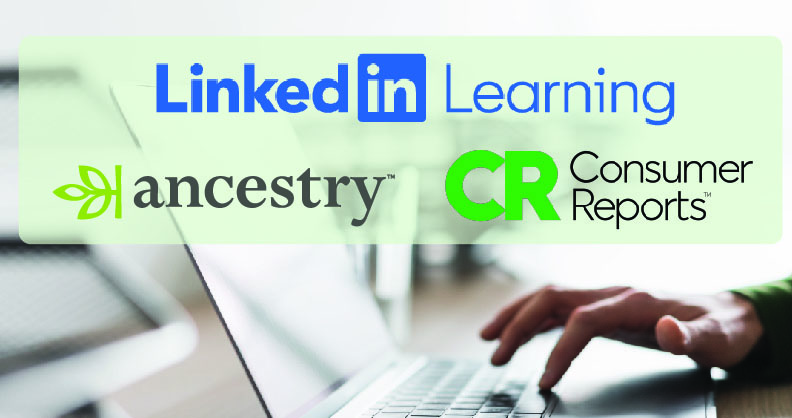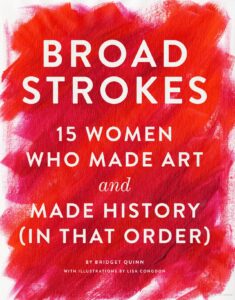Light Reads for Summer
by Rhonna Hargett, Assistant Director
 Summer is a great time to sit back and relax with a cold drink and a good book. I’ve gathered some of my favorite light reads to help you unwind.
Summer is a great time to sit back and relax with a cold drink and a good book. I’ve gathered some of my favorite light reads to help you unwind.
I just finished reading “Eddie Winston Is Looking for Love” by Marianne Cronin, and I truly enjoyed it. At 90 years old, Eddie has retired from his career as a university lecturer but has worked for several years sorting through donations at a thrift shop in Birmingham, UK. One day, 24-year-old Bella comes in to donate the belongings of her boyfriend who recently passed away. They form a steadfast if odd friendship. He helps her process her grief and she helps him in his quest to get his first kiss and expand his fashion taste. “Eddie Winston Is Looking for Love” is a beautiful story about friendship, lost love, and looking for the joy in every moment. Available in print and as a digital audiobook or ebook through Libby.
“The Thursday Murder Club” mysteries by Richard Osman is a delightful series about a retirement community in Kent. Retired MI6 agent, Elizabeth, starts a group in the puzzle room to investigate cold crimes. Consisting of a union activist, a therapist, and a widow with a life mission to make everyone around her comfortable, the group enjoys their non-traditional activity without much success until a local developer is murdered. They use their skills to work the case, although their assistance isn’t always appreciated by the local police. Witty and poignant, “The Thursday Murder Club” tells a gripping story of a unique way to stay active in one’s senior years. Available in print and as a digital audiobook or ebook through Libby.
“Not in My Book” is a spicy contemporary romance by Katie Holt. Rosie and Aiden have been in several writing classes together but have nurtured a vindictive rivalry almost since they met. With Aiden’s love for literary fiction and Rosie’s focus on romance, they have contentiously and loudly judged each other, even though they are both known to be fantastic writers. Adding to their conflict, Peruvian American Rosie is working her way through school, not even able to afford to fly home for Christmas, while Aiden is the child of New York wealth. When their combative interactions start to disrupt the class, their instructor gives them an assignment to write a romance novel together. Although this is a classic “enemies to lovers” romance, “Not in My Book” provides surprising twists and introspection along the way. Katie Holt’s novel would likely be a good read for Emily Henry fans. Available in print and as a digital audiobook or ebook through Libby.
I’m a little behind the times, but I finally read “A Man Called Ove” by Fredrik Backman. Ove is a widower who is frustrated by the world and the people in it. A new neighboring family starts as an irritant but over time coaxes him into a friendship and helps him to see the good in the world. This Swedish debut novel touches on some dark themes but still manages to be uplifting and heartwarming while finding humor in the struggles of life. Backman has published several titles since “A Man Called Ove,” including many more treasures. Available in print and as a digital audiobook or ebook through Libby. The library also provides access to both movie adaptations “A Man Called Ove” and “A Man Called Otto.”
“Miss Austen” by Gill Hornby came to my attention recently when PBS created a series adaptation of the novel. Hornby tells the story of classic author Jane Austen’s sister, Cassandra, who is viewed with mixed feelings by Austen fans. She was the author’s dearest companion in life, but she was also accused of burning many of Austen’s letters, destroying material that would give insight to a mostly unknown life. “Miss Austen” goes back and forth between Cassandra’s youth and later life, fleshing out the historical information we have about both Austen sisters with an engaging fictionalized idea of what might have led her to destroy the evidence that scholars and fans long for. There’s a bit of romance, but the story is really about love between sisters. Hornby has created an intriguing novel that might help redeem Cassandra Austen for devoted Jane Austen readers.
You can find all of these titles at Manhattan Public Library. If you are enjoying reading this summer, you might as well win prizes for it through our Summer Reading Program. Find out more at MHKLibrary.org.


 This summer is shaping up to be a colorful one, especially at your local library. This year’s Summer Reading program is under way, and the theme is “Color Our World.” If you stop by the library, you’ll notice an array of color-themed decorations, including rainbow butterflies and giant paintbrushes.
This summer is shaping up to be a colorful one, especially at your local library. This year’s Summer Reading program is under way, and the theme is “Color Our World.” If you stop by the library, you’ll notice an array of color-themed decorations, including rainbow butterflies and giant paintbrushes. All are welcome here. People from many ways of life and from all over the world meet at the public library. Libraries were first known as a place to collect and share knowledge, but it has also always been a community space. It is the duty of libraries to adapt to meet their community’s needs. This includes cultivating an environment where communities can blossom and a material collection that reflects that. Here is a selection of children’s picture books about building community and finding unity for everyone to enjoy. See through the eyes of a child again.
All are welcome here. People from many ways of life and from all over the world meet at the public library. Libraries were first known as a place to collect and share knowledge, but it has also always been a community space. It is the duty of libraries to adapt to meet their community’s needs. This includes cultivating an environment where communities can blossom and a material collection that reflects that. Here is a selection of children’s picture books about building community and finding unity for everyone to enjoy. See through the eyes of a child again.
 May is Mental Health Awareness Month. This week (May 12-18) focuses on our community as a vital source of support. One way Manhattan Public Library provides support is by providing access to resources and materials. We can often put you in touch with people to help, and if we don’t know, we will find out. We are librarians after all. One way I, personally, provide support for those I know is by sharing my struggles, talking about them openly and honestly, whether it is discussing my current mood or a change in medication. I recently began a healing phase of my life in which I promised radical honesty with folks. Here we go: I suffer from general depression & anxiety disorders and insomnia. Throughout my life these have been managed with medications and coping skills. To be completely honest, insomnia is the hardest part. Sleep health is incredibly important to being able to handle what day-to-day life throws at you, and I’m often running on 3-4 hours or less. I see you. Sometimes we just need a little help, like taking an antibiotic when we have a bacterial infection or insulin for diabetes.
May is Mental Health Awareness Month. This week (May 12-18) focuses on our community as a vital source of support. One way Manhattan Public Library provides support is by providing access to resources and materials. We can often put you in touch with people to help, and if we don’t know, we will find out. We are librarians after all. One way I, personally, provide support for those I know is by sharing my struggles, talking about them openly and honestly, whether it is discussing my current mood or a change in medication. I recently began a healing phase of my life in which I promised radical honesty with folks. Here we go: I suffer from general depression & anxiety disorders and insomnia. Throughout my life these have been managed with medications and coping skills. To be completely honest, insomnia is the hardest part. Sleep health is incredibly important to being able to handle what day-to-day life throws at you, and I’m often running on 3-4 hours or less. I see you. Sometimes we just need a little help, like taking an antibiotic when we have a bacterial infection or insulin for diabetes. National Sourdough Bread Day is recognized on April 1, 2025. It appreciates one of the world’s oldest leavened breads. In the “Encyclopedia of Food Microbiology,” Michael Gaenzle writes: “One of the oldest sourdough breads dates from 3700 BCE and was excavated in Switzerland, but the origin of sourdough fermentation likely relates to the origin of agriculture in Egypt several thousand years earlier.” Sourdough bread has the history of being one of the most ancient forms of bread, and from its origins it seems to be the standard method of breadmaking for most of human history. Let’s celebrate it with baking your own loaf! The Manhattan Public Library has you covered with these bread baking books available for check out.
National Sourdough Bread Day is recognized on April 1, 2025. It appreciates one of the world’s oldest leavened breads. In the “Encyclopedia of Food Microbiology,” Michael Gaenzle writes: “One of the oldest sourdough breads dates from 3700 BCE and was excavated in Switzerland, but the origin of sourdough fermentation likely relates to the origin of agriculture in Egypt several thousand years earlier.” Sourdough bread has the history of being one of the most ancient forms of bread, and from its origins it seems to be the standard method of breadmaking for most of human history. Let’s celebrate it with baking your own loaf! The Manhattan Public Library has you covered with these bread baking books available for check out. It’s April! Along with warmer temperatures and summer growing closer comes Little Apple Pride. This year Pride will take place starting at 11:30 am Saturday, April 12, 2025 in City Park. The public library will be there as well. Be sure to look for our table. We will have stickers, buttons, and smiling faces galore.
It’s April! Along with warmer temperatures and summer growing closer comes Little Apple Pride. This year Pride will take place starting at 11:30 am Saturday, April 12, 2025 in City Park. The public library will be there as well. Be sure to look for our table. We will have stickers, buttons, and smiling faces galore. The grass is beginning to turn green, the temperature is getting warmer, and the birds are singing. Spring has sprung. As we creep into April, the ground starts to unfreeze and becomes the perfect place to plant your favorite fruits, vegetables, and flowers. With the arrival of spring comes the perfect time to start planting a garden. Are you new to gardening and unsure of where to start, or are you a seasoned gardener looking to learn more for this year’s garden? With
The grass is beginning to turn green, the temperature is getting warmer, and the birds are singing. Spring has sprung. As we creep into April, the ground starts to unfreeze and becomes the perfect place to plant your favorite fruits, vegetables, and flowers. With the arrival of spring comes the perfect time to start planting a garden. Are you new to gardening and unsure of where to start, or are you a seasoned gardener looking to learn more for this year’s garden? With 
